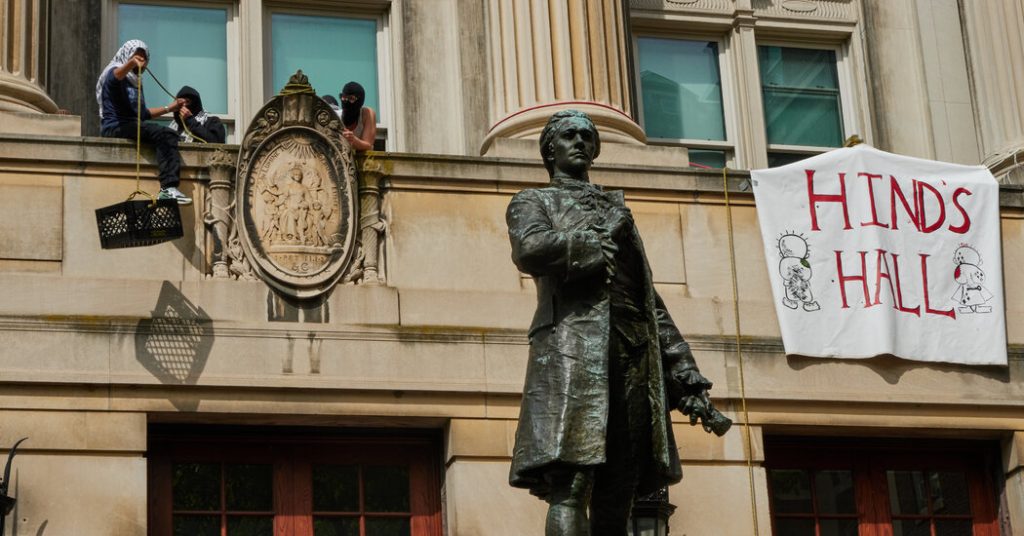On the fifty-sixth anniversary of a riot at Columbia University, police stormed Hamilton Hall to end a student protest over the war in Gaza. Mayor Eric Adams labeled some protesters as “outside agitators,” hinting at dangerous radicalization. Protest efforts have historically been misunderstood but often end up on the right side of history. While the protests have garnered global attention, demands for divestment from companies profiting from the Israeli occupation have not been met, leading to campus closures and police presence until mid-May.
Amid the publicity of protests, the focus on the Palestinian cause may be obscured. Activist Peter Staley reminds that movements risk losing sight of their mission when tactics become the story. The campus demonstrations across the country highlight institutional shortcomings in higher education. The demands and implications of divestment are unclear, echoing Occupy Wall Street’s sense of injustice without clear actions. The protests reveal a failure of colleges to instill strong persuasive skills and critical thinking in students, leaving their values and missions in question.
While the protests at Brown and Columbia share similar grievances, their outcomes differed drastically. While the administration at Brown engaged in debate and collaboration with students, Columbia remained adamant in its refusal to divest from Israel. Despite an offer to review new proposals, the university ultimately called in the police to end the occupation. Compare to Brown, where students voluntarily dismantled their tents after securing a chance to advocate formally for divestment before trustees. Though the outcome remains uncertain, the students will have the opportunity to present their arguments in the fall when a vote is scheduled.
The Columbia protests, influenced by movements like Occupy Wall Street, reflect a broader sense of social injustice but lack clear objectives. The protests spotlight institutional failures within higher education and the challenges in modeling and inculcating fundamental values. While the protests have garnered attention, they have not achieved their main demand of divestment, highlighting a disconnect between idealistic aspirations and practical outcomes. The clashes between students and administrations underscore a need for greater dialogue and understanding in addressing complex social issues.
The events at Columbia raise broader questions about the nature of protest movements and the balance between attention-grabbing tactics and the core mission. As protests shift focus from the Palestinian cause to tactics, the movement risks losing sight of its main objectives. The legacy of protests, both successful and unsuccessful, highlights the challenges and complexities of effecting change through activism. Despite the setbacks at Columbia, the students’ persistence and engagement at Brown offer hope for meaningful dialogue and potential progress in the future. The protests serve as a reminder of the ongoing struggle to reconcile ideals with practical action in addressing societal issues.








